Content Strategy
The Impact of Generative AI on SEO: How to Align Your Search Strategy with the Latest AI Developments
By Casey Nobile on June 26, 2023
There are two sides of the coin to explore when it comes to understanding the impact of generative AI on Search Engine Optimization (SEO): First, the implications of using generative AI to create your content. Second, the implications of generative AI being embedded in search engine algorithms and Search Engine Results Pages (SERPs).
As a marketer, you're probably asking or have been asked: Will our website be penalized for using AI-generated content? Will search engines stop ranking our content in favor of a direct response experience? How do you optimize for AI-powered search? In this article, we'll answer those questions and more while calling out some common misconceptions and often overlooked risks surrounding SEO in the age of generative AI.
Download the Executive Snapshot of This Article
Let's dive in.
Table of Contents:
- Are search engines penalizing AI-generated content?
- Is AI-generated content bad for SEO overall?
- Will my rankings suffer now that competitors can publish content more easily with AI?
- Which search engines use generative AI?
- How will generative AI-powered search impact my rankings?
- How can I optimize my content for Google and Bings new search?
Publishing AI-generated content
The TL;DR:
Search engines do not penalize AI-generated content by default; they do continue to prioritize high-quality, helpful content written with humans in mind. In this respect, content generated primarily by AI will tend to lack the quality that search engines are looking for. AI's penchant for fabricating facts, surfacing unoriginal ideas, and writing in an awkwardly formal style are all big watchouts. To maintain quality rankings, avoid relying solely on generative AI for content creation. Instead, focus on mastering how to boost the quality and reach of your original, human-created content with AI. Especially as more AI-generated content floods the already overcrowded search landscape, standing out with an extensive library of original, helpful, and well-optimized content on your site will become increasingly important for gaining an edge in SERPs.
Are search engines penalizing AI-generated content?
The short answer is no. Whether or not content is generated by AI is not a direct factor in rankings. In fact, Google has explicitly stated that, regardless of whether AI plays a role in content creation, its search algorithm still focuses on prioritizing high-quality, helpful content written for users and de-ranking low-quality, keyword-first content written for SERPs.
The lesson here? Don't do anything with AI-generated content that you shouldn't do today with human-generated content. The sheer volume of online content being generated with AI will raise the bar for what it takes to make it onto SERPs. Expertise, originality, and utility will be critical to distinguish your content from a sea of similar-sounding information being indexed alongside it.
Is AI-generated content bad for SEO overall?
While AI's role in content creation doesn't directly impact search rankings, we recommend marketers avoid relying on generative AI to create new content from scratch, which can introduce unintended risks to quality rankings.
Here are a few of the top reasons why:
1. AI-generated content can be inaccurate and generic.
AI is only as "informed" as the data it's been trained on. Large language chat models like Bard and ChatGPT primarily provide users with the most "plausible" response to a prompt, which is not the same as the most "accurate" response. With limited data to draw from, these models are known to fabricate facts, plagiarize information from the text they've been trained on, and regurgitate surface-level advice. This is why, at a minimum, human editorial oversight and fact-checking are critical before publishing content generated by AI.
2. Broad use of AI increases the risks of generating duplicate content.
Ask Bard or ChatGPT the same question several times, and you'll find that their algorithms tend to generate similar or near-identical text in response. Imagine a scenario in which thousands of creators and organizations ask the same question and each leverages the AI-generated text in their web content. Once search engines crawl those pages, they will detect the similarity of the content across URLs and categorize it as unoriginal (lacking unique or expert insights)—which can negatively impact those pages' rankings.
3. Purely AI-generated content isn't copyrightable.
According to the most recent guidance from the US Copyright Office, content created wholly from AI can not be copyrighted. However, content created by humans, then adjusted by AI can be. If the ability to own rights to the content you're creating is part of its intrinsic value to your brand, then this is an essential drawback to consider and educate your team about.
For these reasons and more, we developed ATOMM, generative AI that takes the in-depth, human-generated content we create with our clients and uses it as a source from which to generate a host of derivative assets such as personalized versions, sub-topic blogs, social posts, video scripts, and more. We've validated this approach as the best way to guarantee quality and originality while still harnessing the benefits of AI-driven scalability and speed in content marketing.
Will my rankings suffer now that competitors can publish content more easily with AI?
The ease of creation with AI will inevitably drive up competition in search. Thriving in this environment will require brands to distinguish their content as uniquely valuable: expertise, originality, usefulness, depth, and breadth of topic coverage are some factors that cannot be sacrificed if brands want to sustain and grow their search visibility. In addition to quality, up-leveling your page experience, metadata structure, and overall site performance will be critical to gaining an edge over other sites as the barrier to entry on SERPs gets higher.
Generative AI-powered search engines
Now let's turn to how SERPs are evolving to integrate generative AI and how those changes stand to impact your website and content rankings.
The TL;DR:
The way Google and Bing have integrated generative AI into their search experiences is all designed to keep users on SERPs for as long as possible so they can serve more ads (which account for the bulk of their company profits). With this aim, generative AI is being used to:
-
Better understand the intent behind users' search queries
-
Surface results that meet searchers' needs more precisely on the SERP
-
Merchandise content on the SERP in a way that keeps users engaging with it for longer
-
Continue to pave the way for a more conversational and potentially voice-search-dominant experience
With content marketing, you should do everything possible to own as much SERP real estate as possible. The good news is, looking at the new SERP experiences, there are more opportunities to build brand equity there than ever. How the new, AI-powered SERPs engineer results may cause some click erosion in the short term. However, with the right approach—including the optimization recommendations we've highlighted below—there's potential to drive even higher search CTR in the long run.
Which search engines use generative AI, and which models do they use?
Google's new Search Generative Experience (SGE) and the new Bing search incorporate generative AI models in their algorithms and via conversational search modules directly on their SERPs.
Google's SGE is still billed as an experimental interface, but searchers can use it through Google Search Labs.
Google's SGE is powered by an array of advanced AI models, including LaMDA (Language Model for Dialogue Applications) and PaLM 2 (Pathways Language Model 2)—the core language models powering its conversational chat service, Bard.
Bing's new generative AI-powered search experience is available to anyone using Bing through Microsoft's Edge browser.
The new Bing runs on multiple AI models from Microsoft and Open.ai. The Bing chat module on its SERPs is powered by GPT-4, the same model behind ChatGPT.
How will generative AI-powered search impact my content rankings and search CTR?
To answer this, look at the search features that present the most significant changes to SERPs and CTRs:
1. Direct response snapshots:
In the case of Google's SGE, the top of the new SERP (also known as "position zero") is now populated with an AI-generated snapshot. Think of this as the new featured snippet. Instead of surfacing the answer as a snippet taken from a single source, the snapshot is generated by AI. This AI-generated snapshot synthesizes information from multiple sources across the web, which are featured to the right of the answer, as pictured below.
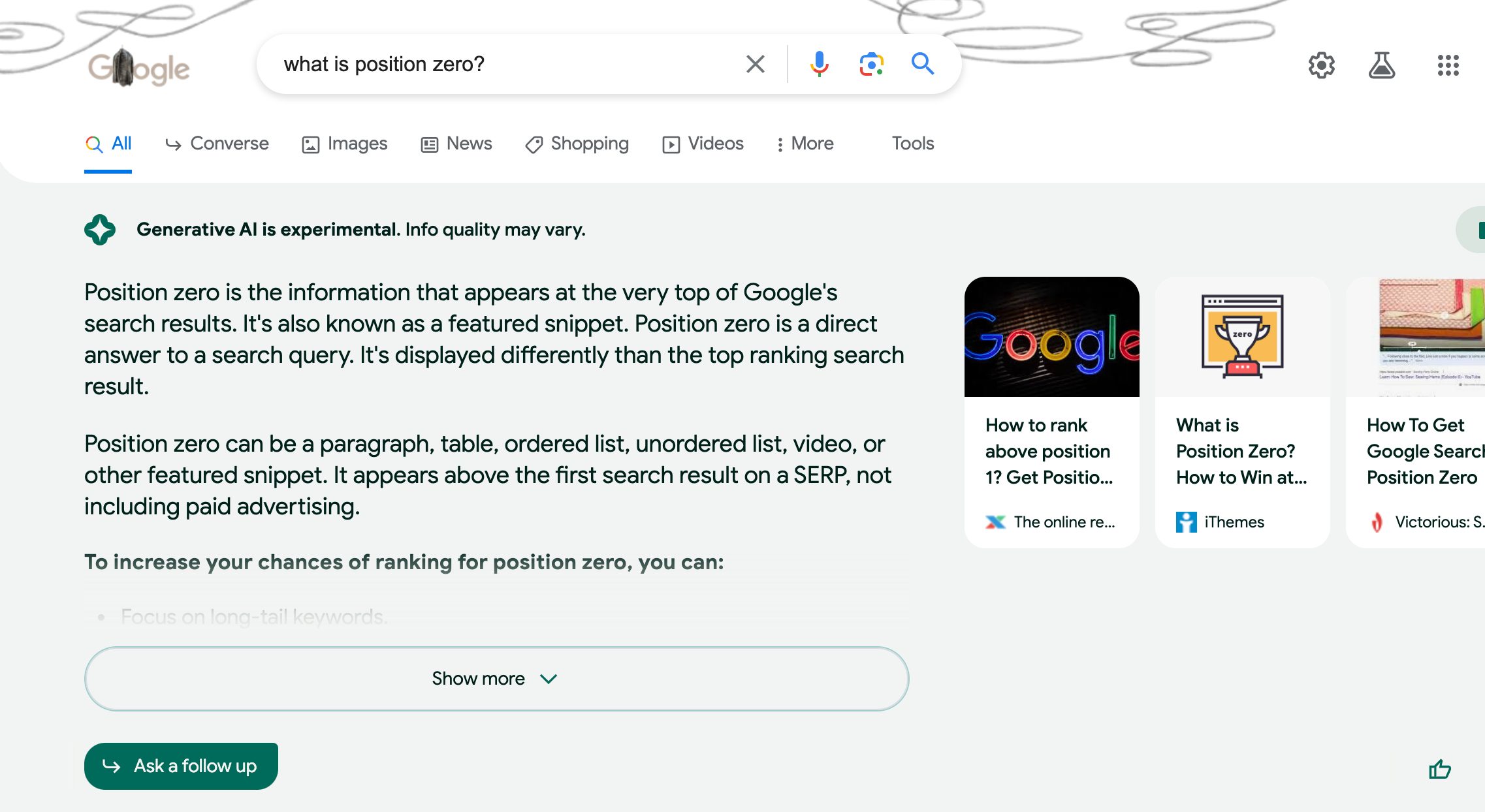
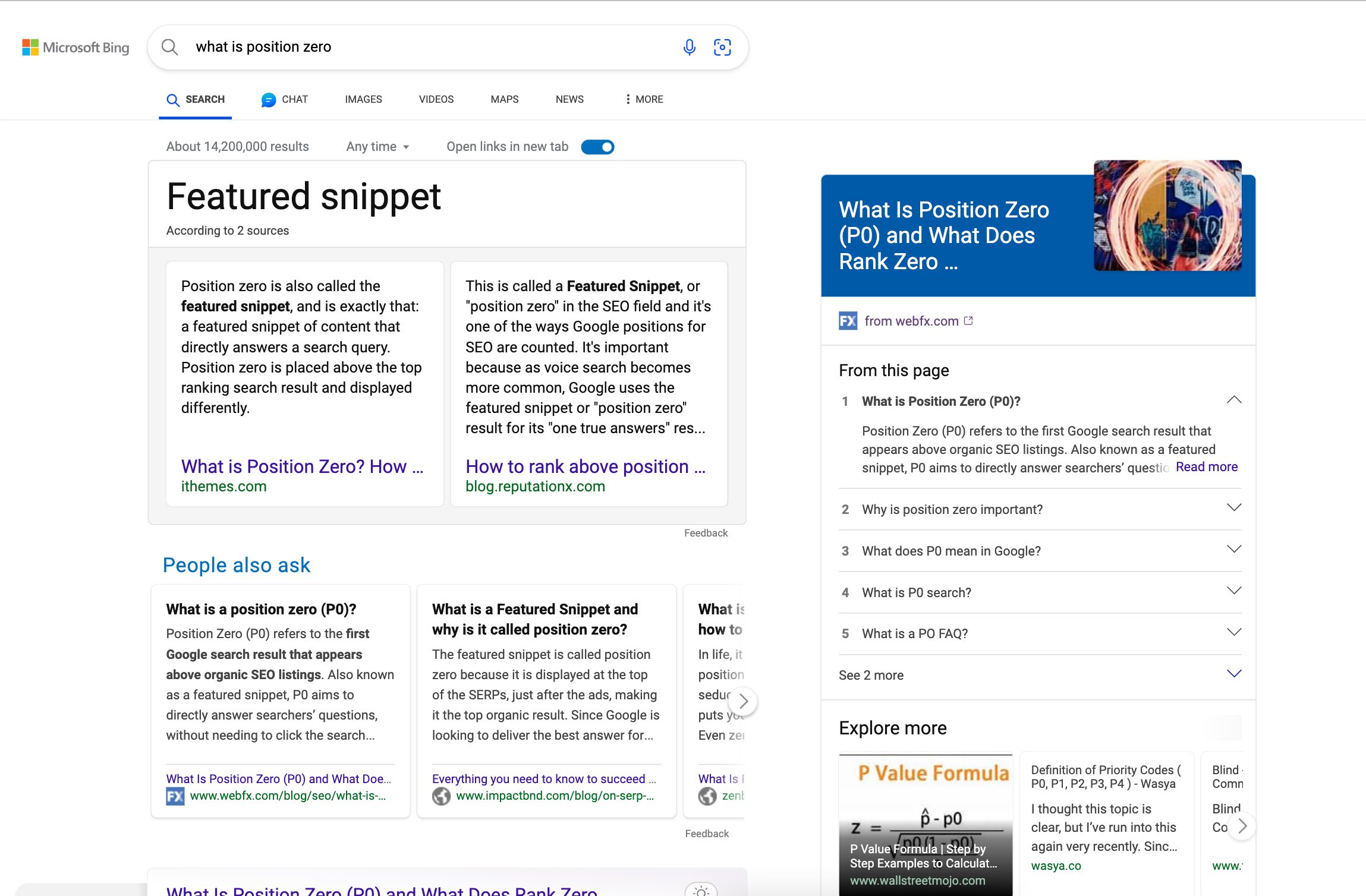
What it means for marketers:
Expect CTRs from featured snippets to decrease. With generative AI taking over the top of the SERP, the coveted position zero is no longer as ownable by a single source as it once was. To counter this, brands should aim to be an oft-cited source link and win as much real estate as possible elsewhere on the SERP.
Veteran SEOer and Skyword VP, Sonny Sharp, breaks it down this way:
"This particular update to SERP behavior means some types of queries and page types are at higher risk of traffic erosion.
The top pages at risk are those optimized for queries that the AI can easily answer directly: Listicles, basic category pages, definitions, and other types of Top of Funnel educational content.
Pages at medium risk will be more complex YMYL content because the algorithms are still skittish about doling out weighty advice. However, this could change relatively quickly. Already, Google's SGE seems to be generating a lot of direct responses for health-related queries.
The pages at lowest risk will be eComm product pages, which might actually begin to see more clicks given that, anecdotally, we've noted SGE tends to now surface product detail pages (PDP) as snippets at the top of its SERPs, where standard search often surfaced a list of product landing pages."
In this new search environment, it will be essential to shift from covering topics with a definition-based or single-question, single-answer strategy to covering topics more intentionally and comprehensively—crosslinking between related assets that provide top-level information to those that provide more in-depth education and actionable advice.
2. More options and more suggestions:
Both Google and Bing have re-merchandised the area below position zero with more prescriptive content suggestions, such as pages covering related topics, next steps, and common follow-up questions. This gives searchers more answer alternatives and entices them to stay on the search platform to binge information.
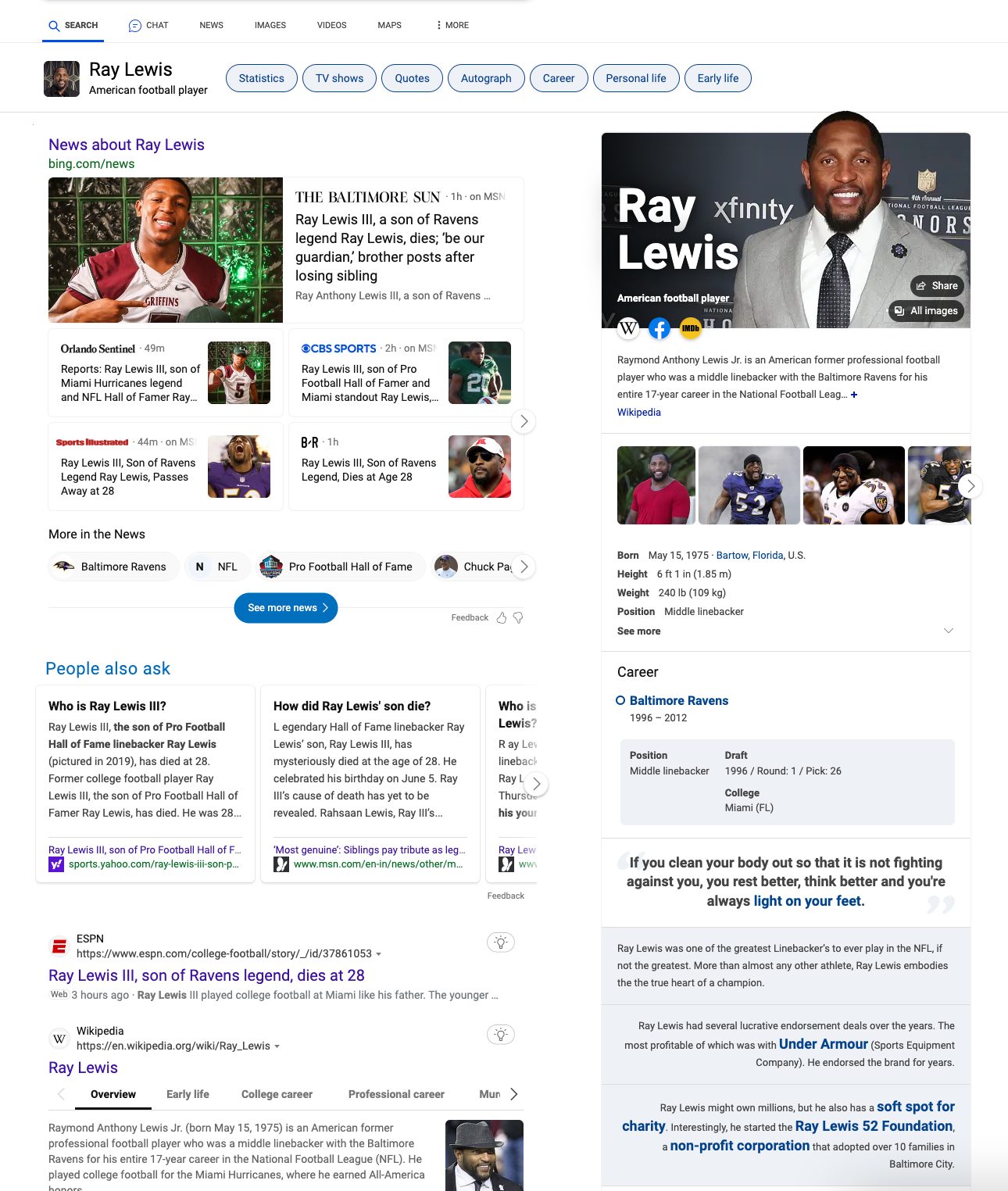
What it means for marketers:
This paradigm shift provides more opportunities for brands to secure meaningful SERP real estate than the former list-oriented view. A well-engineered cluster content approach is ideal for achieving this, with long-form pillar pages covering topics comprehensively and related sub-topic content going into more depth on spinoff questions and advice. In addition, we recommend:
Focusing on topics that your brand has particular authority in:
-
For any given query, be sure to address: relevant sub-topics, related questions, followup questions, next steps, etc.
-
Spend more time nailing down the specific query language that your target audience would use
-
Focus on optimizing for long-tail queries rather than broad keywords
3. Embedded conversational interfaces:
One of the most extensive changes Google and Bing have brought to their searches is the ability to enter a conversational interface directly on the SERP. Essentially embedded versions of Bard and ChatGPT, users can now pose followup questions to Google and Bing as they browse results. The search then evolves from question to question in a conversational format without the user having to generate a new search for each query or move back and forth between SERPs via their browser.
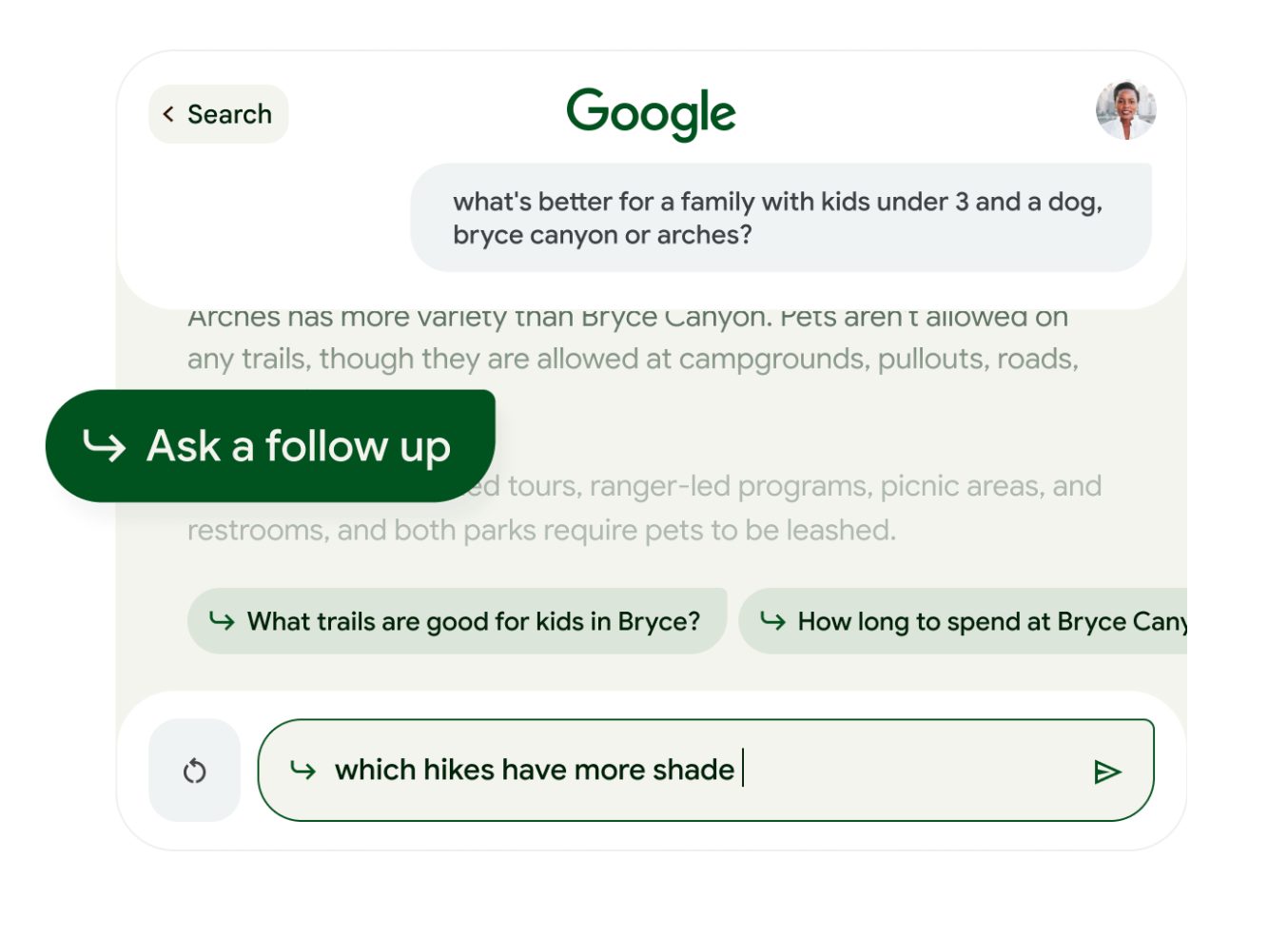
Google's SGE allows users to trigger a chat on the SERP to ask followup questions.
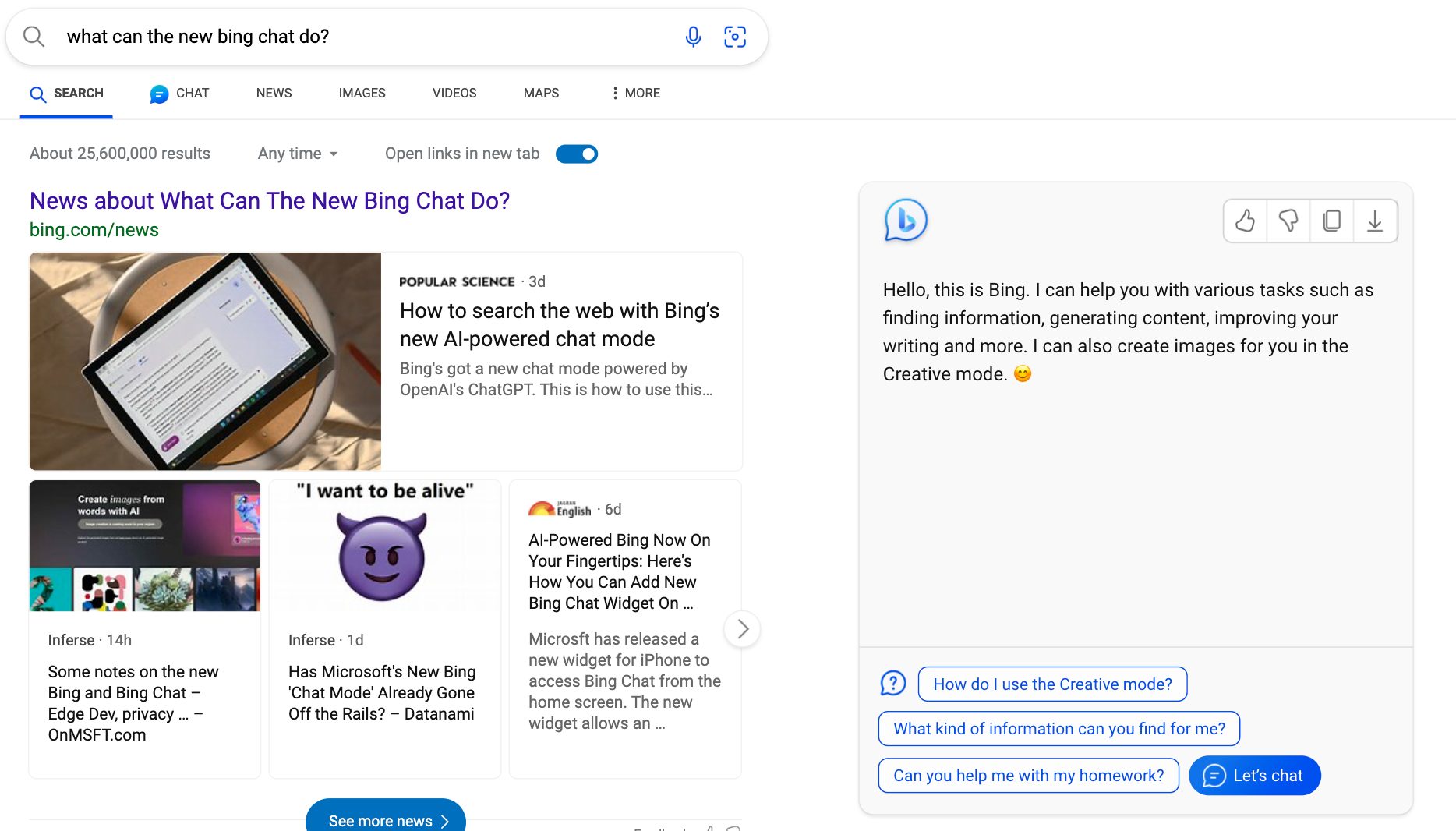
What it means for marketers:
The downside is that more users may get their answer directly from Bard or ChatGPT than from the site content you designed to answer their question. The good news: the main SERP and conversational interface will continue to suggest related web link options for users, which means that within one search session, your brand potentially has more shots to appear in results.
4. Emphasis on entities:
Simply put, entities are categories that advanced search algorithms use to group things or concepts with similar properties together. Typical entity types are people, places, objects, and even concepts. By analyzing entities, search engines can better assess the relationships between different pages and domains online to deliver more precise, intent-aware results.
In the past, search engines relied heavily on factors like keyword density and proximity to gauge content's relevance to a query, which could be easily manipulated. That's changing with entities now enabling search engines to grasp the relationships between concepts and assign relevance based on their connectedness.
What it means for marketers:
Creating content that considers your target audience's query intent—not just keyword usage—is crucial to showing up in the right searches. For example, if you query "freelance content marketing strategist" and "hire a content marketing strategist" the SGE responses are entirely different -- versus a standard organic SERP, which is almost identical for both queries. Optimizing your content for search intent may mean you show up in search less frequently for specific keywords, but—done right—it means your content will show up (potentially even more prominently) in the right searches.
How can I best optimize my website for AI-powered search engines?
In sum, marketers need to expand their SEO toolbox to prepare for this significant shift in search. Best practices known today but frequently ignored or considered "nice to haves" will now be critical to SERP visibility. Double down on the following optimization tactics now, and your brand will be well-positioned for the soon-to-be mass adoption of AI-powered search.
1. Adopt a cluster content strategy:
Develop a content strategy focusing on core topics, sub-topics, and followup questions. By strategically addressing multiple aspects of a subject and building out a comprehensive suite of related content, you can signal greater topic authority to search engines and stand to earn more positions on the core and associated content suggestions modules on the new SERPs.
2. Optimize content for engagement:
As search engines look to identify the best sources of content more precisely, your site's engagement metrics, such as time on site and pages visited, are increasingly significant ranking factors. Create content that captivates users and encourages them to spend more time on your website to signal your site's higher value.
3. Pay attention to site experience and core web vitals:
To drive up engagement and earn SEO bonus points, optimize your website for a seamless user experience, considering factors like page load speed and mobile responsiveness as well as the performance of multi-format embedded content and interactive modules. Paying more attention to core web vitals, you stand to gain an edge among increasingly competitive search rankings.
4. Make content accessible in multiple formats:
Diversify your content formats to cater to different user preferences. Incorporate text, images, videos, infographics, and other media types to engage a wider audience and boost your visibility across Google and Bing's image, shopping, and video platforms.
5. Lean into optimizing for long-tail, conversational search, rather than keywords:
With the rise of voice search and AI-powered assistants, optimize your content for long-tail, conversational queries. This involves using natural language and targeting specific user intent vs. broad keywords.
6. Begin optimizing around entities:
Shift from keyword-focused to entity-aware. Ensure that relevant entities on your web pages are properly identified, categorized, and aligned with search engine algorithms. Understanding user intent and delivering valuable entity-related information will improve your chances of ranking higher in search results.
As Generative AI continues to reshape the search experience, we're here to help you understand and navigate the latest developments. Learn more about how you can leverage AI to atomize your original content the smart, safe way with ATOMM. Get the latest content marketing and generative AI updates delivered straight to your inbox by subscribing to our blog, The Content Standard.
Featured image by Alek via Adobe Stock.
